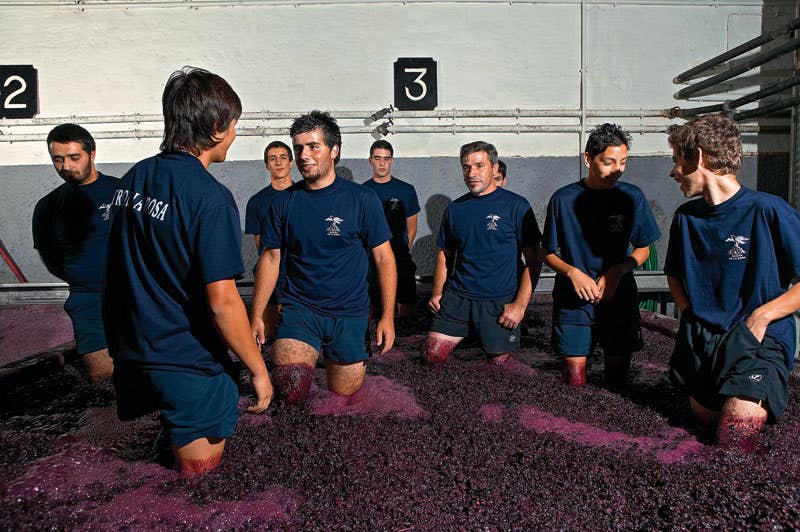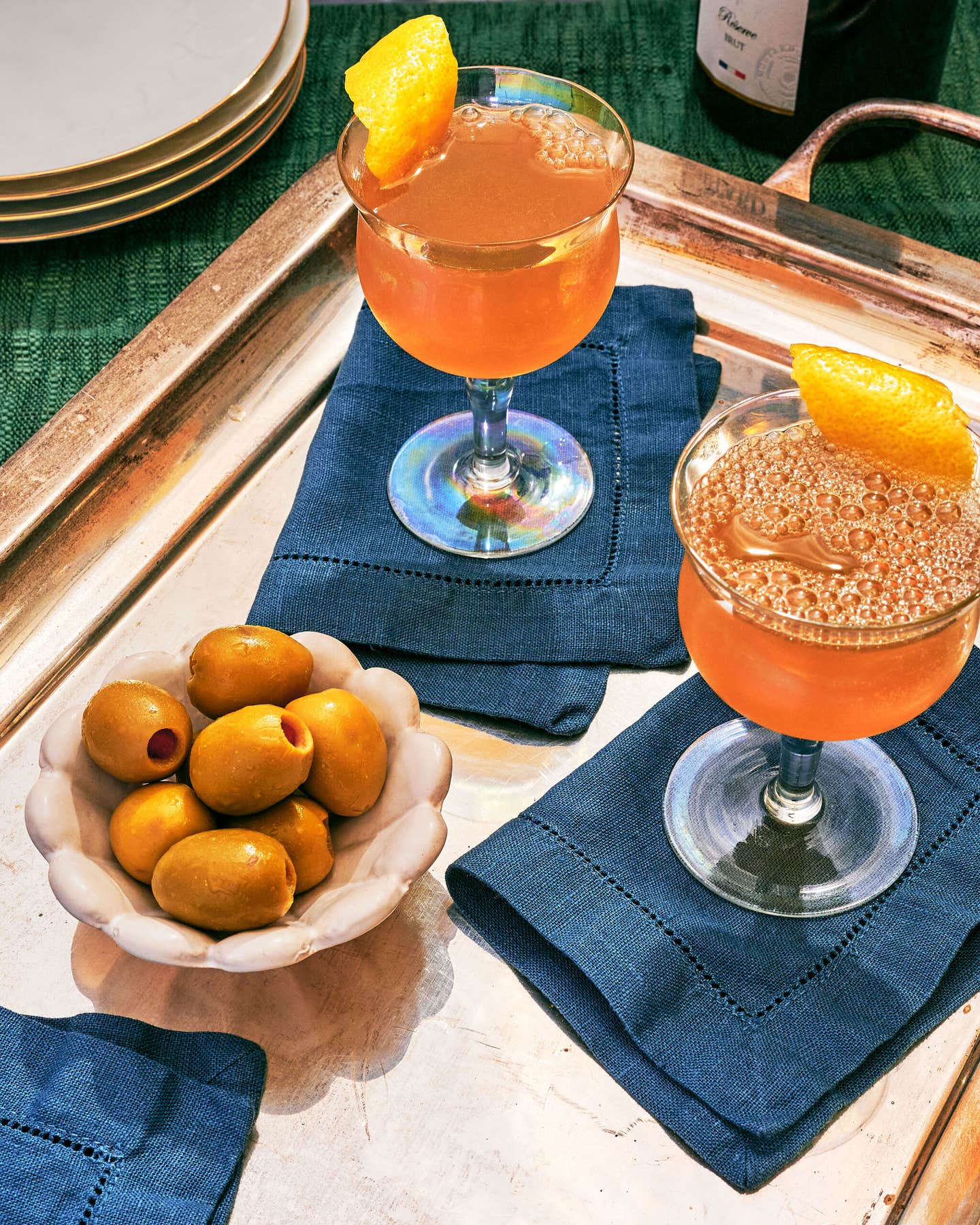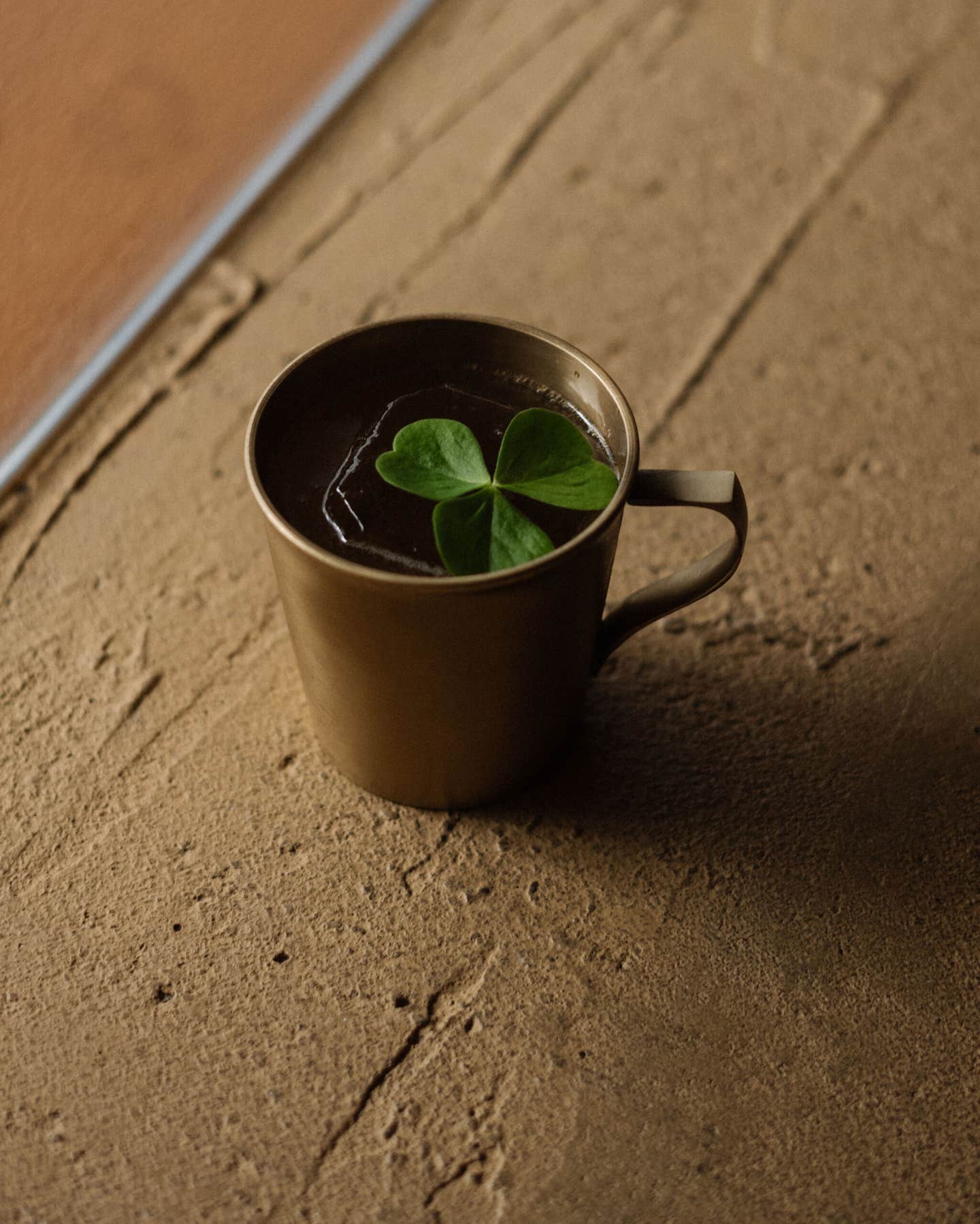
Three years ago, I was tasked with building a predominantly Portuguese wine list for the opening of the restaurant Aldea in New York City. Having worked for most of my adult life in restaurants, I was confident in my knowledge of wine, but the unique styles and grapes of Portugal were a virtual mystery to me. I had never seen a Portuguese wine on a high-end wine list, and the few $10 bottles that had slowly started to make their way onto my local wine-store shelves didn't particularly inspire me. Fortunately, I had a cadre of Portuguese wine professionals, as well as Aldea's Portuguese-American chef, George Mendes, to guide me. What I discovered was a real surprise: a world of food-friendly wines that I was excited to share with diners.
Although stateside wine lovers like me think of Portugal as a new discovery, the country—long and narrow and hugging Spain's western border along the Atlantic coast—has a winemaking history that stretches back as far as 1200 b.c. The Phoenicians and the Romans made wine here. Port, the country's iconic fortified wine, has been a sought-after export since the start of the 18th century. But it wasn't until Portugal became a member of the European Union in 1986 that the focus started to shift to unfortified wines. With that new affiliation came a large influx of cash to modernize not only roadways and schools, but also wineries. Efforts began to shift from simple wines made for domestic consumption to wines that could stand up to global scrutiny. Scores of young vintners, many of whose families reflect Portugal's rich heritage of winemaking, began studying abroad to bring some of the latest viticultural innovations back home. Nowadays there is very serious wine being made in Portugal.
With more than 300 indigenous grapes, plus a growing trend toward wines made with cabernet and other international grape varieties, the landscape is complex to navigate. I've found that it helps to know something about Portugal's notable wine regions. The country is roughly the size of Indiana, but its climate and topography are surprisingly varied.
In the north lie lush coastal valleys, with rainfall comparable to that of the Pacific Northwest. This region, called Minho, is where the most well-known Portuguese wine is produced. Some say this light, easy white is named vinho verde, or "green wine," because it's meant to be enjoyed young. Others attribute its moniker to the verdant landscapes surrounding the vineyards. Either way, vinho verde is one of the most refreshing ways I know of to start off a summer meal. Usually a blend of local white grapes—floral loureiro, citrusy trajadura, tart paderña, and, for richer wines, aromatic alvarinho—its best examples have one thing in common: freshness, with a touch of effervescence. There are dozens of vinho verdes to choose from, most costing under $15, but JM Fonseca Twin Vines Vinho Verde 2011 is my favorite. With hints of lemon and lime, it's low in alcohol (10 percent) and terrific to drink with briny oysters.
Winemakers in this region also bottle white wines made entirely with alvarinho, a grape more commonly known in the States by its Spanish name, albariño. The terrific Quinta do Louridal Poema 2009, produced by a winemaking family spanning six generations, unleashes hints of nectarine and honeysuckle, and a finish of sparkle. I always recommend it with a spicy seafood dish like shrimp alhinho; its subtle sweetness enhances complex heat and garlicky flavors.
Below Minho, the large Beiras region spans the country east to west; toward the coast here is an area called Bairrada. The soil is mostly chalky clay, which the vines like, and cool Atlantic breezes help promote the grapes' acidity. While the region is famous for the red grape baga, I look to some of the lesser-known white varietals. The tart grape arinto is usually blended with other grapes, but I like it on its own. A great bottle is the Campolargo Arinto 2009. Though it sits for six months in oak, this wine shows none of the butterscotch notes we've come to expect from barrel-aged whites. Instead, it's got great minerality, with bright grapefruit notes. It's often paired with seafood, but I think it works surprisingly well with dessert; it cleanses the palate when served with pound cake or creamy custards.
To Minho's east, the vineyards of the Douro cling to rocky hillsides that plunge into the region's namesake river. Sheltered from moist sea breezes by mountains, the Douro experiences incredibly hot, dry summers, while the high altitudes bring equally cold winter nights. Winemaking here is challenging, but the payoff is fantastic. This is Portugal's premier wine region—the world's oldest controlled domain for wine, established in 1756, and the area where the grapes for port are grown: floral touriga franca, spicy tinta cao, and others.
The same grapes get pressed for unfortified wines. Traditionally, these have been robust reds with a rich stewed fruit flavor. But there are also Douro wines that are more modern and balanced, with a fair amount of food-friendly acidity. Quinta de La Rosa Reserve 2007 is crafted, in part, from touriga nacional, which I often describe as similar to cabernet sauvignon, only lighter and more herbaceous. This grape yields a versatile red that goes with lots of foods, particularly seafood stews.
In terms of value, Portugal rewards wine drinkers most in the $50 to $75 range, where its world-class wines—ones suitable for aging—are more affordable than comparable bottles from other countries. The Douro produces many of these. The Quinta do Vale Meao Douro 2008, from a winery founded in 1877, is a stunning wine made from touriga nacional, touriga franca, fairly tannic tinta roriz, and the softer tinta barroca. They have struck a beautiful balance in their winemaking, blending old-world techniques with a modern facility. The grapes are handpicked and (as at Quinta de La Rosa) foot-crushed, but the fermenting tanks are gleaming stainless steel. Then the wine is aged for two years, mostly in new French oak. The result is a powerful red wine, with lush dark-cherry flavor, a bit of smokiness, and a velvety long finish. It stands up to grilled and highly seasoned meats.
Not to be overshadowed by its reds, though, are the Douro's elegant whites. Guru 2010 is a relatively new wine from the veteran winemaking couple Sandra Tavares da Silva and Jorge Serodio Borges, who call their operation Wine & Soul. Aged in French casks for six months, this is a big, complex white. Its sea-breeze aroma belies an oaky creaminess on the palate, and it tastes of nectarines and other stone fruits, but with a long, dry finish. It can stand up to hearty dishes like porco a alentejana, that classic Portuguese marriage of pork and clams.
While the Douro's tradition is long established, there are up-and-coming regions in Portugal where winemakers are creating some of the coolest wines I have ever tasted. In the westernmost part of the country surrounding Lisbon, there's a newly anointed region, Lisboa, where the gorgeous Quinta do Monte d'Oiro Reserva 2003 is made. With its leathery fruit and pepper and violet aromas, this wine (96 percent syrah and 4 percent viognier), so embodies Cote Rotie style that if you closed your eyes and drank it, you'd swear you were in the Rhone Valley. If I had to choose one wine to drink forever, this would be it. At the restaurant, I pour it with richly sauced meat dishes, like the full-flavored stewed goat with cherries.
Toward Portugal's south, the hotter, more Mediterranean region of Alentejo is starting to gain as much attention as the Douro, thanks in part to vintners like David Baverstock, of the winery Esporao. Baverstock, an Australian, makes many wines, but the Esporao Reserva 2008 delivers the most bang for the buck. For just under $25, this blend of native and international grapes delivers beautiful balance with hints of chocolate, spice, and soft tannins. A touch of alicante bouschet gives the wine a striking purple gemstone color. Though most of the bottles I uncork day to day are enjoyed by someone other than me, this is the one I drink at home whenever I barbecue. It reminds me that, no matter how ancient and diverse Portugal's winemaking tradition is, it is still, deliciously, evolving.
TASTING NOTES
Campolargo Branco Arinto 2009 ($18) A refreshing white made using all arinto grapes, this smells of melon, vanilla, and pencil shavings, with salty and grapefruit flavors mellowed by oak.
Esporao Reserva 2008 ($25) Blueberry aromas, with hints of chocolate and vanilla, yield to ripe dark-fruit flavors and a long finish. Try it with grilled steak or a strong, ripe cheese.
JM Fonseca Twin Vines Vinho Verde 2011 ($8) Floral and citrus aromas characterize this light, refreshing, and subtly effervescent white, perfect as a summer aperitif.
Quinta de La Rosa Reserve 2007 ($48) Made from hand-picked fruit matured in large French barriques for 12 to 18 months, this deep purple blend has persistent flavors of blackberries, plums, and coffee.
Quinta da Terrugem Aliança Alentejo Single Estate 2007 ($23) Aged for a year in new French oak, this medium-bodied, ruby-hued blend has a ripe, sweet nose, with touches of mineral and raisin and a long, licorice finish.
Quinta do Louridal Poema Alvarinho 2009 ($32) Full of ripe golden apple with a great minerality and a light effervescence, this medium-bodied white is a great match for spicy foods.
Quinta do Monte d'Oiro Reserva 2003 ($45) This aromatic red smells of both bacon and jasmine, with a chocolately flavor and a sexy velvet finish.
Quinta do Vale Meao Douro 2008 ($87) Beautifully structured, with great acidity, this red has berry aromas and hints of smoke and vanilla.
Wine & Soul Guru 2010 ($45) A creamy, oak-aged white tasting of stone fruits, this one finishes long and dry and can hold up to hearty pork and seafood dishes.
Keep Reading
Continue to Next Story










